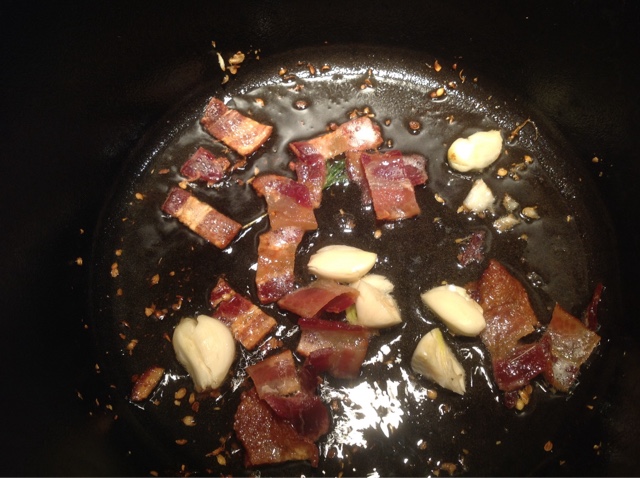Today's chaat session comprises of paani poori and ragda pattice. I make the pattice by mashing boiled Yukon Golds with arrowroot. It used to be cornstarch, but I find the former has a cleaner, crisp taste. Ragda is usually made with white vatana or peas. Dried peas are soaked in water overnight and cooked with baking soda to give them a soft texture. My shelf is devoid of dried peas. Or the alternative, garbanzo beans. But deep in the pantry I find a can of white kidney beans. They prove to be more than adequate, so that I plan to keep on using this bean in place of the dried peas. Their mushy consistency is just what the curry needs to give it substance.
RAGDA PATTICE
Serves 4
Ragda
1 can white Kidney Beans
2 tablespoons Canola Oil
1/4 teaspoon Mustard seeds
1/4 teaspoon Mustard seeds
1 small Onion
1/4 teaspoon Turmeric
1/2 teaspoon Chile powder
1/2 teaspoon Amchur or dried Mango powder
1/2 teaspoon Kosher Salt
1/2 teaspoon Kosher Salt
2 teaspoons Green Chile Chutney (store-bought or home made)
10 Mint leaves
10 Mint leaves
Green Chile Chutney
3 green Chiles
2 Ginger slices
4 Garlic cloves
1 cup Cilantro
3 tablespoons Lime juice
1/4 teaspoon Kosher Salt
2 Ginger slices
4 Garlic cloves
1 cup Cilantro
3 tablespoons Lime juice
1/4 teaspoon Kosher Salt
Pattice
3 large Yukon Gold or Russet Potatoes
2-3 teaspoons Arrowroot
3/4 teaspoon Kosher Salt
1 tablespoon Oil
Tamarind Chutney (store-bought or home made)
If you are making the green chile chutney, start by blending all the ingredients with a tablespoon of water. Puree till smooth, place in a jar and refrigerate. The chutney lasts a week in the fridge.
Squeeze pulp well and strain into a saucepan. You should have just the liquid. No pulp.
Add jaggery and salt and simmer on a medium flame for 15 minutes or until the sauce thickens. Cool and place in a glass jar.
1 cup Tamarind pulp
2 cups Water
1/2 cup Jaggery or Brown Sugar
A pinch of Kosher Salt.
If you are making the green chile chutney, start by blending all the ingredients with a tablespoon of water. Puree till smooth, place in a jar and refrigerate. The chutney lasts a week in the fridge.
If you are not using store bought tamarind chutney start by making it first. Soak tamarind in water for 3 to 4 hours.
Squeeze pulp well and strain into a saucepan. You should have just the liquid. No pulp.
Add jaggery and salt and simmer on a medium flame for 15 minutes or until the sauce thickens. Cool and place in a glass jar.
Start ragda by draining and rinsing beans well.
Mince onion finely.
Heat oil in a pot.
Splutter mustard seeds for 10 seconds.
Splutter mustard seeds for 10 seconds.
Add onion. Saute till light brown.
Drop beans into onions and add turmeric, chile, amchur and salt. Stir well.
Rinse bean can well, fill with water and add to beans. Bring to a simmer.
Spoon chutney into beans and simmer for 10-15 minutes.
Thinly sliver mint leaves and add to beans. Continue cooking for a few minutes more.
Thinly sliver mint leaves and add to beans. Continue cooking for a few minutes more.
Start pattice by boiling potatoes. Drain, peel and mash them.
Add arrowroot and salt. Use your hands to mix potatoes.
Form into 1 1/2 inch wide flat patties. You should have 10-12. Eyeball it. Patties do not have to be uniform in size.
Heat the tablespoon of oil in a nonstick skillet.
Slip patties into hot oil. Brown on one side for a few minutes, then flip and brown the other.
Plate a couple of patties in a shallow bowl.
Top with a couple of ladles of warm ragda.
The official bean in ragda is vatana or dried white peas. I have experimented with garbanzo beans on many occasions. But since this attempt with white kidney beans, i am a convert to this bean. Use any easily available white bean.
Feel free to use store bought chutneys. The green chile chutney I used is the Swad brand. Its convenient, fast and tasty.
The same goes for tamarind chutney. Indian grocery stores now carry a range of chutneys.The above tamarind chutney recipe is easy. The chutney stays well for a few months in the fridge.
Chaat goes over very well. We slurp paani poori, moving on to warm ragda pattice as lunch progresses. Potato pattice offer comfort on all levels. These small discs drowned in beans taste heavenly. Then again this weekend has been hellish on carbs!





















































